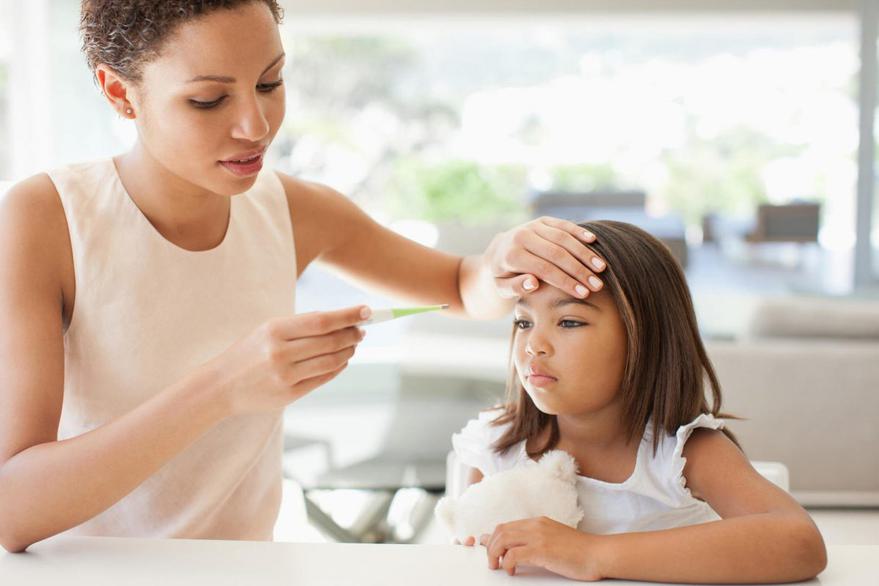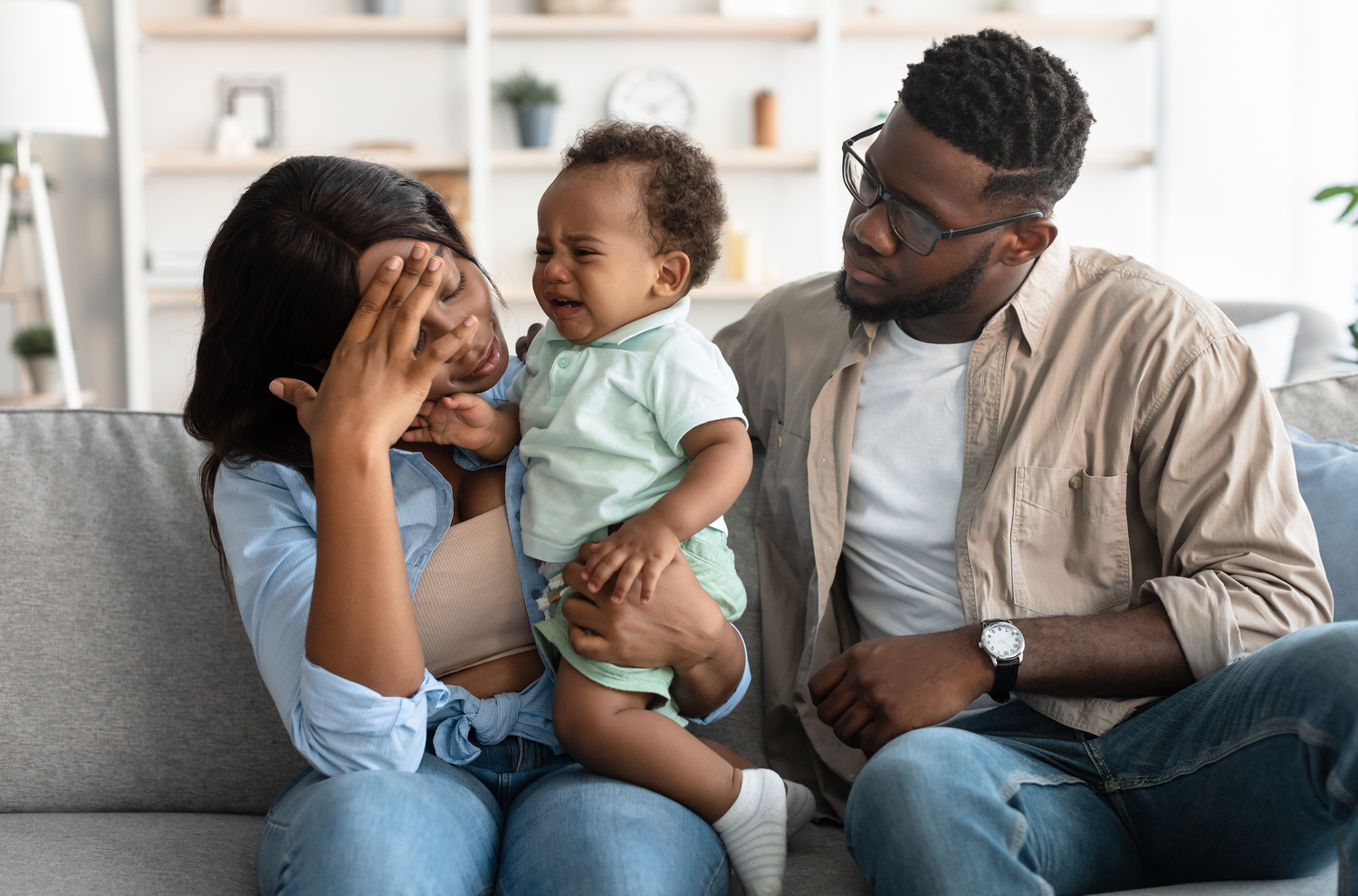The promotion of health and preventative care is crucial as we strive to keep our children safe and well. Here you’ll find invaluable information about common childhood ailments, how to treat them at home and more importantly, guidance for knowing when to call a paediatrician.
On This Page
Worms
Seek medical attention if your child is younger than two years old or has recurrent episodes.
What are they?
Pinworms and threadworms are intestinal parasites that are common in children. They have the tendency to spread very easily. Sometimes you can see the worms in the stool, but not always, so your child may only need treatment based on their symptoms.
Common Symptoms
- Irritability and restlessness
- Abdominal pain
- Itchiness, especially at night
- Disturbed sleep
- Recurrent bladder infections/irritation
How to Treat at Home
- Use over-the-counter medications recommended by a pharmacist
- Treat the whole family and implement strict hygiene measures
Sore Throat
Brief Description
Often caused by a viral infection, which gets better with supportive treatment. Sometimes they can be caused by bacteria called Group A Streptococcus (Strep Throat), which needs treatment with antibiotics to prevent complications. Strep throat is unusual in children under two years of age. Children over four years may also present with a rash. In rare cases, sore throat can be a symptom of a more serious illness such as Infectious Mononucleosis.
Common Symptoms

- Painful throat
- Fever
- Bad breath
- Reduced oral intake
- Vomiting
- Swollen neck glands
- Trouble swallowing
How to Treat at Home
- Use over-the-counter pain relief, like paracetamol or ibuprofen
- Make sure your child takes enough fluids
- Offer soft and cold food, like yoghurt or frozen ice lollies
- In older children, try using an oral antiseptic spray or gargle with an antiseptic solution
See Your Paediatrician If…
- Their fever does not respond to paracetamol (Tylenol) and ibuprofen (Advil), or lasts more than 48 hours• Child is not taking fluids and is at risk of dehydration
- Child is drooling because they are unable to swallow their saliva
- Child is lethargic or irritable
- Your child has been in contact with someone who has Strep Throat.
Read More On:
A list of Paediatricians in the Cayman Islands
Vomiting & Diarrhoea
What causes it?
Usually caused by a stomach bug, although it can be caused by food poisoning. In rare cases, it can be a symptom of a different illness, such as a urinary tract infection.
Common Symptoms
- Loose and frequent stools
- Mucous and/or blood in the stool
- Vomiting food and fluids
- Loss of appetite
- Abdominal pain
- Fever
How to Treat at Home
- Keep infants hydrated by frequent nursing, and older children by offering them fluids in small amounts, but often (like Pedialyte, water, or diluted apple juice)
- Avoid solids until vomiting settles
See Your Paediatrician If…
- Your child is not keeping any fluids down and thus at risk of dehydration
- Their vomit contains blood or bile
- There is reduced urine output
- Your child becomes lethargic or restless.
Skin Infections
Brief Description
Skin Infections can be caused by viruses, bacteria, or fungi. Skin gets infected easily if it is already affected by a different problem such as eczema, insect bites, cuts and scrapes.
If the infection penetrates the deeper layers of the skin, it is called cellulitis, a very serious condition.
Common Symptoms
The rash depends on what the infection is caused by. The most common rashes are:

- Impetigo, caused by bacteria - Blisters, crusts or little ulcers anywhere on the body, but mainly around the mouth or hands
- Ringworm, caused by fungi - Red, itchy, or scaly patches, with defined edges that may resemble a ring, anywhere on the body
How to Treat at Home
- Remember to keep the skin clean and moist
- Try to avoid irritants to the skin such as soap or fragrances
- Try to avoid scratching the skin
See Your Paediatrician If…
- Your child's condition gets worse or becomes cellulitis
- If the rash/area is getting bigger or will not stop bleeding
- Please note: all cases of Impetigo or Ringworm must be treated with topical or oral medications.
Read More On:
Cayman’s Vaccination Schedule
Ear Infection
Brief Description
Ear infections are caused by fluid behind the ear drum (middle ear infection) or an infection of the ear canal (swimmer’s ear). Under 5s are at higher risk of ear infection, especially after or along with upper respiratory tract infection. Occasionally, earache may be due to tooth pain radiating to the ear.
Common Symptoms
- Ear pain
- Pulling or rubbing the ears
- Fussiness and irritability
- Fever
- Reduced oral intake
- Leakage from ear
- Redness around or behind ear
- Reduced hearing
How to Treat at Home
- Administer over-the-counter pain relief, like paracetamol or ibuprofen
- Press a warm cloth to the ear
- Nurse or feed infants frequently (sucking helps reduce pressure in tube between nose and ear)
- Try to keep the ear dry
See Your Paediatrician If…
- There is no improvement with paracetamol or ibuprofen within 48 hours
- The earache is also associated with fever
- There is ear pain in both ears
- There is leakage from ear
- There is redness and swelling around and behind ear
- Your child appears unwell and lethargic
- Your child is off-balance.
Head Injury
Brief Description
Head injuries often occur from falling off a significant height, like a bed or changing table. This may also happen when the child is running and playing, or is hit by an object (e.g. a ball). Head injuries can be external, to the scalp, or internal, involving the skull, with bruising/bleeding to the brain. Fortunately, most childhood falls or blows to the head cause injury to the scalp only.

Common Symptoms
- Visible external injuries
- Headache
- Vomiting
- Lethargy
- Irritability
How to Treat at Home
- Remain calm yourself to avoid distressing the child
- Comfort your child
- Look for external injuries
- Apply ice if appropriate
See Your Paediatrician If…
- Your child has fallen from a significant height
- Loses consciousness, even for a very short time
- Is irritable or will not stop crying
- Is lethargic and not interested in distraction
- Is unable to wake up
- Vomits
- Is unsteady on their feet
- Your child is less than two years old.
Hand, Foot & Mouth
What is it?
This is a mild, contagious viral infection common in younger children, resulting in sores and a rash on the hands and feet. Hand, Foot & Mouth can spread through person-to-person contact and bodily fluids, but with proper hygiene, the risk of spread can be reduced significantly.
Common Symptoms
- Fever
- Sore throat
- Blister-like lesions on tongue and mouth
- Red rash, sometimes with blistering, on palms, soles of feet and/or buttocks
- Lack of appetite/not wanting to eat
- Irritability (particularly for infants and toddlers)
How to Treat at Home
- Buy over-the-counter pain relief, such as paracetamol or ibuprofen
- Offer cool drinks and soft food
- Offer a cool/cold bath
- Keep your child hydrated
- Avoid contact with other children
See Your Paediatrician If…
- Fever reaches 38.5°C (101.3°F)
- You feel that symptomatic relief is needed.







